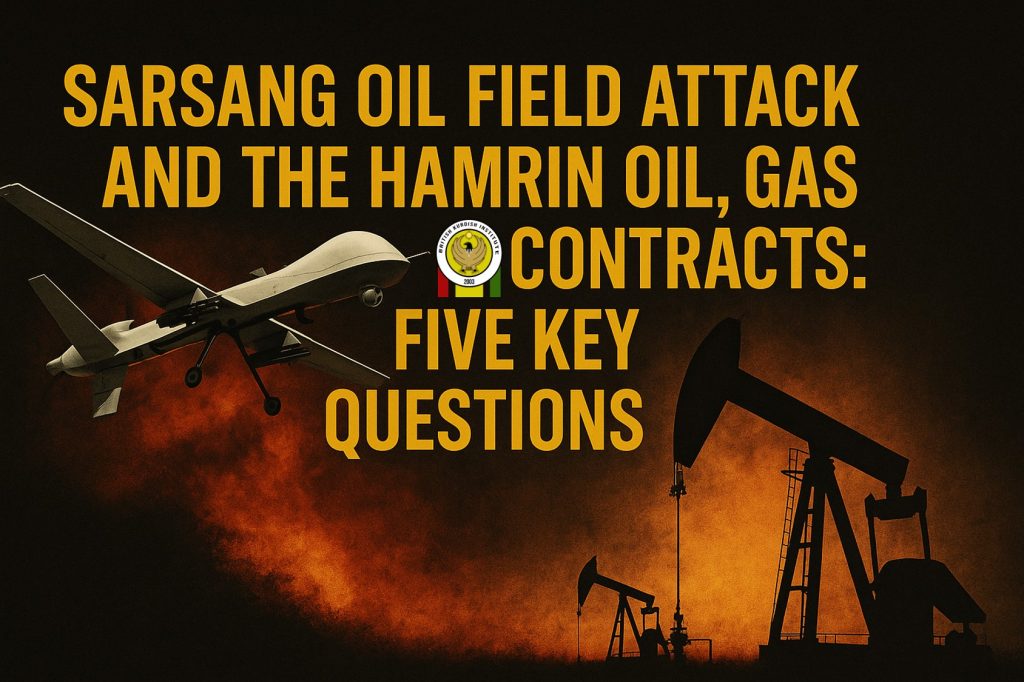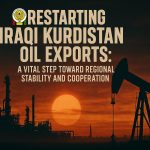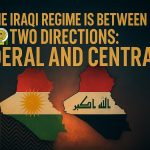A drone attack halted 30,000 bpd at Sarsang just hours before Iraq signed a Hamrin development contract with HKN Energy (60,000 bpd oil; 45–50 MMcf/d gas). The strike signals technical superiority, an intent to curb Kurdistan Region output, and a political warning tied to U.S. pressure on Iraqi oil sales. Production in the Kurdistan Region dipped by ~30,000 bpd; a narrow 19,000-barrel gap still blocks a Baghdad–Erbil export deal. Below are the key facts—and five unresolved questions.
Key Takeaways
-
What happened: A drone struck the Sarsang oil field, operated by U.S.-based HKN Energy (62% owner). HKN reported no casualties but suspended 30,000 bpd pending assessment.
-
Same day, major deal: Iraq’s Oil Ministry held a signing ceremony for HKN + North Oil Company to develop Hamrin (target 60,000 bpd oil and 45–50 MMcf/d gas).
-
Why it matters: The timing underscores security, economic, and political dimensions—including U.S. scrutiny of Iraqi-branded sales involving Iranian crude.
-
Regional context: Drone incidents are now routine—including two strikes on Khurmala the day before.
-
Market impact: Kurdistan Region output is typically 280–300k bpd; the strike shaved ~30k bpd. A 19k bpd gap still separates Baghdad and Erbil on a Ceyhan export restart.
The Strike at Sarsang: What We Know
Early Tuesday, a drone hit the Sarsang oil field, an asset chiefly operated by HKN Energy (62% share). The company confirmed no casualties but paused its ~30,000 bpd production to conduct safety and damage assessments. The event aligns with a broader pattern of drone activity across the Kurdistan Region.
The Hamrin Contract: Timing That Raises Eyebrows
Just hours later, Iraq’s Oil Ministry formalized a deal between HKN Energy and the North Oil Company to develop Hamrin with a plan for ~60,000 bpd of oil and 45–50 million cubic feet per day of gas. The presence of Matthew Zais, HKN’s Deputy Director, in Baghdad as the deal was being finalized underscores the tight coupling of security events and commercial milestones.
Three Signals the Attack Sends
-
Security/technical edge: The strike showcases operational superiority—in reach, accuracy, or both.
-
Economic disruption: Reducing Kurdistan Region output and complicating sales channels appears to be an immediate goal.
-
Political message: A likely warning related to U.S. scrutiny of Iraqi oil marketing and potential penalties on SOMO tied to Iranian oil flows.
The U.S.–Iraq–Iran Energy Triangle
Recent moves—Washington’s tariff notice on Iraqi goods, Treasury sanctions (July 3) on networks selling Iranian oil under Iraqi cover, and Baghdad’s own acknowledgment that Iran has used Iraqi documents—frame the attack within a larger compliance and sanctions narrative. According to 2024 energy tallies cited in the discussion, Iran’s output outpaced Iraq’s, with stronger YoY growth for Iran versus modest gains for Iraq—adding pressure to curb illicit routing and reconcile revenue data.
Why Sarsang—and Not Other, Closer Fields?
Other Duhok-area assets—Tawke, Peshkabir, Shekhan, Bashiqa—are geographically accessible and in some cases closer. Choosing Sarsang looks deliberate, pointing to political signaling rather than mere convenience or maximum physical disruption.
Production Impact and the Baghdad–Erbil Gap
-
Regional output: Typically 280–300k bpd.
-
Immediate loss: ~30k bpd temporarily offline after Sarsang.
-
Dealbreaker detail: The remaining gap between Erbil and Baghdad for Ceyhan pipeline exports is reportedly ~19,000 bpd—a frustratingly small delta for a breakthrough.
HKN in the Crosshairs: Beyond One Field
Targeting HKN is also a shot at the lobbying leverage of international operators in U.S. policy circles. Much of the pressure on Erbil and Baghdad to resume pipeline exports and reach a new framework has been aligned with commercial interests linked to companies like HKN.
Five Key Questions That Still Need Answers
-
Sanctions vs. sovereignty: If the U.S. Treasury threatens SOMO, do illegal armed groups gain license to attack parts of the Iraqi state and claim revenues?
-
State coherence: Is there a split between formal institutions and on-the-ground power brokers, or just policy incoherence?
-
Legal precedents: Does HKN’s deal with the Iraqi Oil Ministry settle disputes over Kurdistan Region contracts, or do legal challenges continue?
-
Why HKN, why now? Among many U.S. majors, why did Iraq choose HKN at this moment—and what’s the lobbying dimension?
-
U.S. response: How will Washington react to harm against U.S. companies/investors operating in Iraq?
Quick Facts
-
Operator/Stake: HKN Energy (62%) at Sarsang
-
Sarsang output: ~30,000 bpd (suspended after strike)
-
Hamrin plan: ~60,000 bpd oil; 45–50 MMcf/d gas
-
KRG output baseline: 280–300k bpd
-
Baghdad–Erbil gap: ~19,000 bpd to restart Ceyhan exports
Internal/External Link Ideas
-
Internal: Backgrounder on KRG–Baghdad oil revenue sharing, explainer on Ceyhan pipeline.
-
External: Neutral primers on Iraq oil sector governance and U.S. Iran-oil sanctions.
FAQs
What is the Sarsang oil field and who operates it?
Sarsang is a Kurdistan Region field primarily operated by HKN Energy, which holds a 62% stake.Was anyone hurt in the Sarsang attack?
No casualties were reported, but ~30,000 bpd of production was halted pending assessment.What does the Hamrin contract include?
A deal between HKN Energy and North Oil Company to develop Hamrin for ~60,000 bpd oil and 45–50 MMcf/d gas.How do the strikes affect Kurdistan Region output?
Regional production, typically 280–300k bpd, saw a ~30k bpd dip following the Sarsang hit.What stands in the way of resuming exports via Ceyhan?
A reported ~19,000 bpd difference remains between Baghdad and Erbil positions.
-









